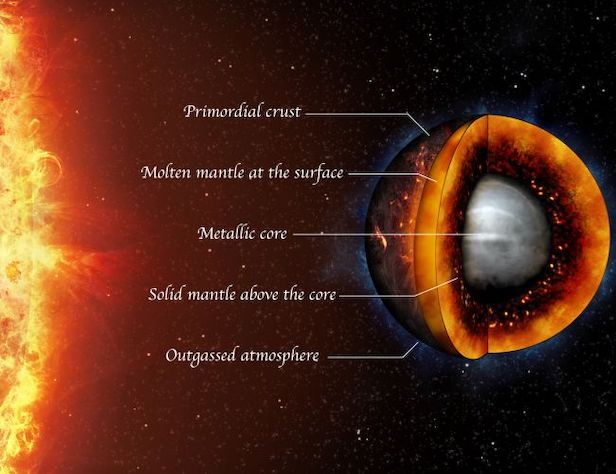A churning ‘molten blob’ of planet may be easier to find. Here’s why
Molten planets could hold clues as to how a planet eventually becomes habitable, much like Earth

An artist’s depiction of a molten exoplanet. Image credit: University of Bern/Thibaut Roger
The smaller a planet, the more difficult it is to spot — which is frustrating for scientists hoping to find Earth-like worlds.
That’s why a team of researchers set out to determine what planetary traits would make a world a little easier to identify. Their analysis suggests that molten worlds with atmospheres full of water or carbon dioxide will be more easily observed by instruments that will be available to scientists soon.
“A rocky planet that is hot, molten and possibly harbouring a large outgassed atmosphere ticks all the boxes,” Dan Bower, lead author on the new study and an astrophysicist at the University of Bern, said in a statement. “Granted, you wouldn’t want to vacation on one of these planets, but they are important to study since many if not all rocky planets begin their life as molten blobs, yet eventually some may become habitable like Earth.”
Earth grew out of its molten stage pretty quickly, but other worlds may retain a so-called magma ocean in which much of the planet’s surface is churning lava. Bower and his colleagues wanted to consider this stage of a rocky planet’s life because molten rock is a little less dense than solid rock.
And that’s a boon for observers: If two planets have the same mass but one has a magma ocean and the other doesn’t, it could be about five percent larger across, making it easier to spot. And a molten world is more likely to be leaking water and carbon dioxide from that liquid rock out into a developing atmosphere.
Those two molecules are easily released by molten rock, but they are also the sort of thing that future telescopes like NASA’s James Webb Space Telescope are being designed to detect. Webb won’t be able to study Earth-size planets around stars like our Sun, but it should be able to analyse those around smaller M dwarf stars.
Similarly, the slightly larger size of these molten planets won’t help the struggles of finding planets orbiting Sun-like stars. But the European Space Agency’s CHEOPS exoplanet-hunting mission, which is due to launch late this year, should be able to measure differences in size at that scale around M dwarf stars.
And if scientists can study such planets, they’ll learn about more than just these distant worlds. “Clearly, we can never observe our own Earth in its history when it was also hot and molten,” Bower said. “Thinking about Earth in the context of exoplanets, and vice-versa, offers new opportunities for understanding planets both within and beyond the Solar System.”
The research is described in a paper being published in the journal Astronomy and Astrophysics. You can read a copy of the paper on the preprint server arXiv.org.
Need more space? You can get 5 issues of All About Space Magazine for just £5/€5/$5 for the latest amazing news from the final frontier!





